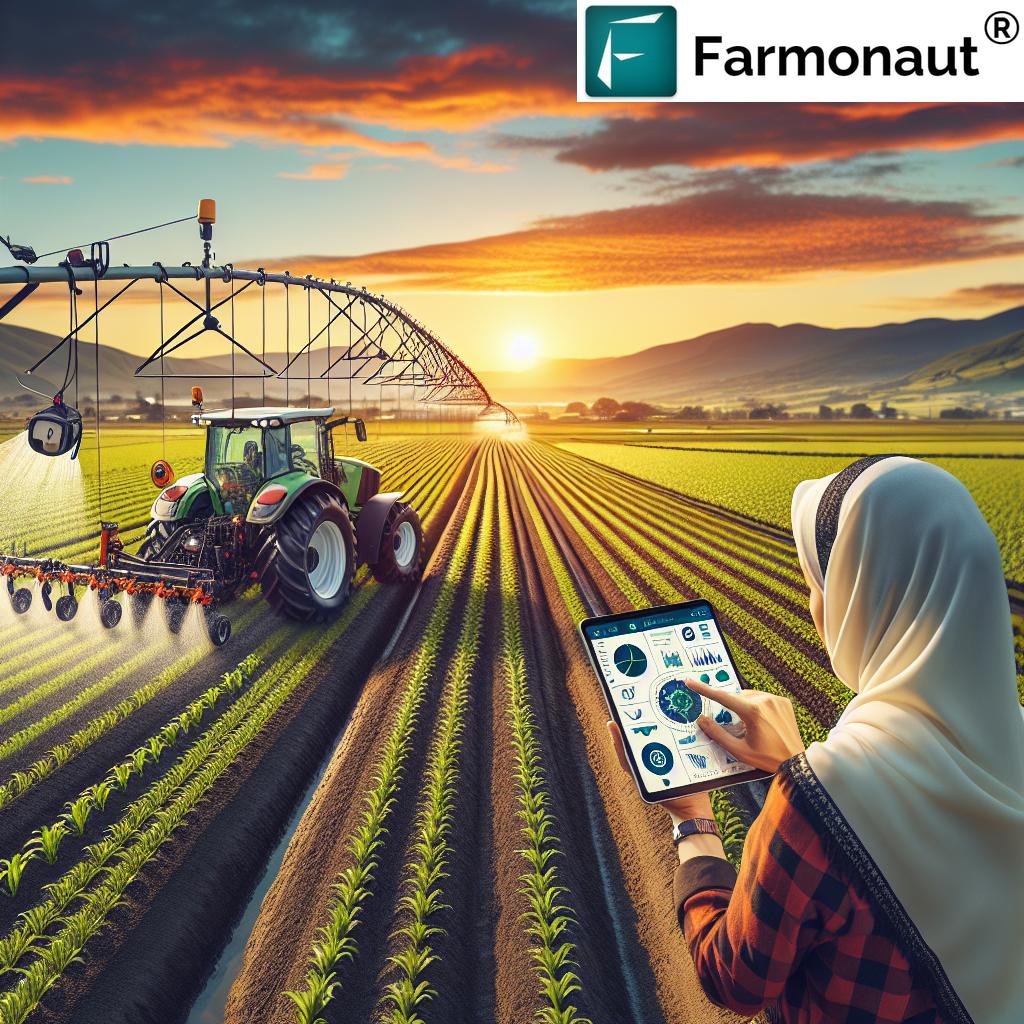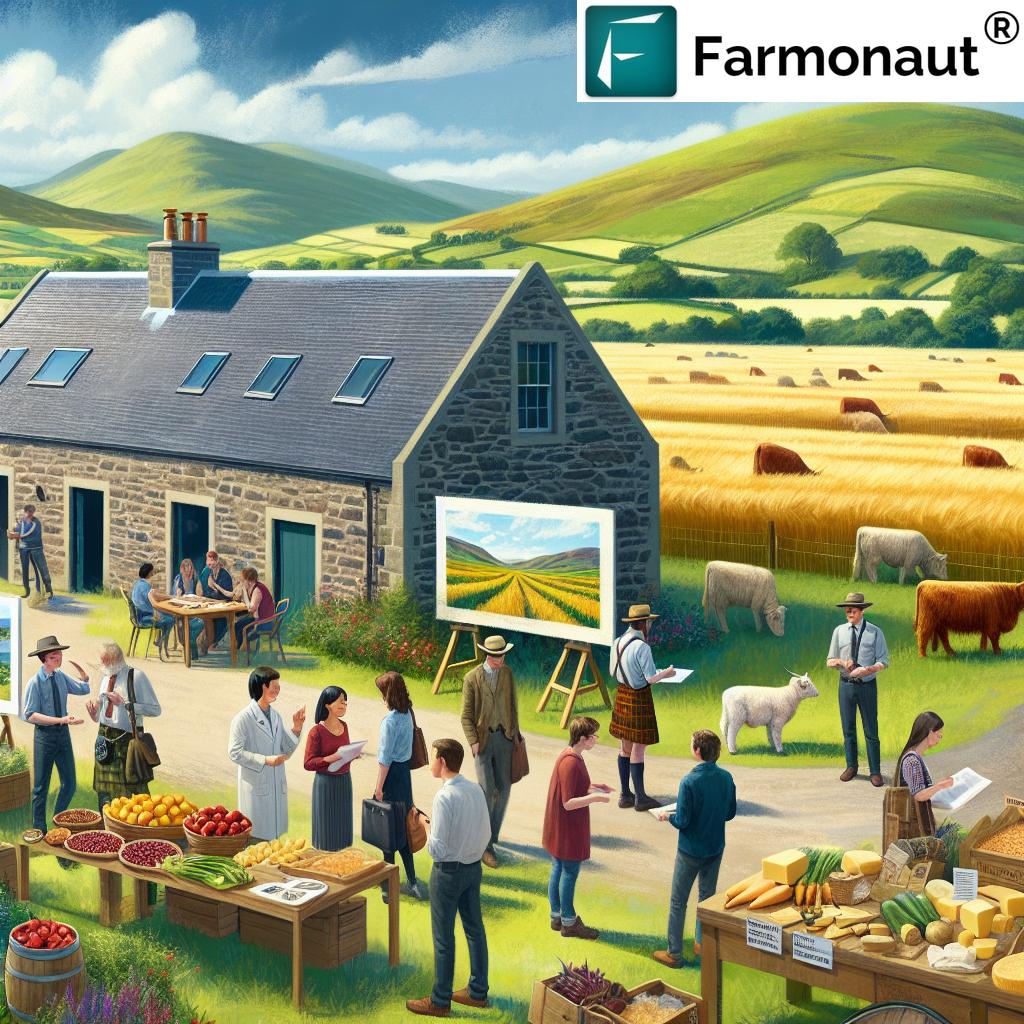Types of Weather Forecasting in Agriculture: UK Farming 2025
Summary:
Types of Weather Forecasting in Agriculture: Enhancing Farming Decisions in 2025
In the dynamic world of agriculture, especially in the UK, weather plays a pivotal role in determining crop yields, planting schedules, pest management, and overall farm productivity. As we progress into 2025, the types of weather forecasting in agriculture are evolving rapidly, driven by advancements in technology, artificial intelligence, and data integration. Accurate weather forecasts for farming, including reliable 5-day farming weather forecasts, are now indispensable for modern-day UK farmers, enabling them to make informed decisions, optimize resource use, and minimize operational risks. This article extensively explores the major types of weather forecasting in agriculture, focusing on the UK context, the unique utility of short-term forecasts, and cutting-edge systems propelling productivity in 2025 and beyond.
“Over 80% of UK farms will use advanced 5-day weather forecasting systems to guide decisions by 2025.”
Table of Contents
- Introduction: Understanding Types of Weather Forecasting in Agriculture
- Why Weather Matters in UK Agriculture (2025 and Beyond)
- Main Types of Weather Forecasting in Agriculture
- Technology & Innovation: Revolutionizing Forecasting in UK Farming (2025)
- Comparison Table: Major Agricultural Weather Forecasting Methods (UK 2025)
- The Farmonaut Edge: Enhancing Agricultural Weather Forecasts in 2025
- The Impact of Accurate Weather Forecasting on UK Agriculture
- Best Practices for Using Weather Forecasts in UK Agriculture
- FAQ: Types of Weather Forecasting in Agriculture (UK 2025)
- Conclusion: A New Era of Weather-Informed UK Farming
Understanding Types of Weather Forecasting in Agriculture
Weather forecasting in agriculture refers to the prediction and analysis of atmospheric conditions that directly impact farming activities. The continuous gathering, integration, and modeling of weather data—like rainfall, temperature, wind, humidity, and solar exposure—allow for actionable guidance in critical aspects of agricultural management. Whether it’s scheduling planting, optimizing irrigation and fertilization, or controlling pests and diseases, the types of weather forecasting in agriculture have become integral to modern farming decisions.
The focus keyword “types of weather forecasting in agriculture” is central to this discussion, as forecasting has grown beyond basic TV bulletins into a spectrum of short-term (up to 7 days), medium-term (8–30 days), and seasonal (months ahead) models, many leveraging sophisticated innovations such as AI, machine learning, and satellite systems.
Why Weather Matters: The Pivotal Role of Forecasting in UK Agriculture
In the UK, agriculture faces a highly variable climate—temperate, often unpredictable, and influenced by Atlantic systems. Sudden rainfall, unseasonal frosts, and wind storms can swiftly affect crop yields, soil quality, and livestock management. This is especially relevant in 2025 as patterns influenced by climate change introduce increased variability and weather extremes, intensifying the pressure on precision agriculture.
- Crop Yields & Planting Schedules: Well-timed and accurate weather forecasts for farming help UK farmers decide the best times for sowing and harvesting, minimizing risk.
- Pest & Disease Management: Weather forecasting for agriculture is critical for predicting and responding to pest outbreaks, as certain pests thrive under specific atmospheric conditions.
- Irrigation & Fertilization: Using 5-day farming weather forecasts, farmers can schedule water and nutrient applications to maximize uptake and minimize runoff, protecting both yields and the environment.
- Labour & Farm Resource Management: Weekly and daily forecasts inform farm management, optimizing labor schedules, machine usage, and input efficiency to enhance productivity.
- Disaster Preparedness: Early warnings of hail, storms, or flood risks allow for rapid proactive measures—covering crops, adjusting drainage, or moving livestock.
Types of Weather Forecasting in Agriculture
The need for precision in agricultural decision-making has given rise to several types of weather forecasting in agriculture, each with its own scope and benefits. Let’s delve deeper into their context, applications, and relevance in UK farming for 2025.
1. Short-Term Weather Forecasting for Agriculture (0–7 Days)
Short-term, or synoptic, forecasting is among the most commonly used types of weather forecasting in agriculture. It provides granular weather data for daily to weekly planning, essential for high-frequency farm decisions.
- 5 Day Farming Weather Forecast (the industry gold standard): Focuses on rainfall, temperature highs/lows, frost/hail warnings, wind speeds, and humidity, specific to localized areas rather than broad regions. In the UK, platforms delivering farming weather forecast UK data leverage meteorological station networks and satellite data for hyper-localized accuracy.
- Typical Uses: Scheduling irrigation and pesticide applications, planning labor for harvesting, adjusting greenhouse ventilation, and reacting quickly to severe weather warnings.
- Key Benefit: Actionable insights delivered with a high degree of accuracy (up to 90% in 2025) for the next 1–5 days, optimizing farm responses and protecting crop quality.
2. Medium-Term Forecasting in Agriculture (8–30 Days)
Medium-range forecasts refine farm-level strategic planning over a slightly longer horizon—ranging from upcoming crop growth stages to preparing for predicted weather events a few weeks ahead. This type of forecasting integrates regional and global data models with intelligent algorithms, often powered by AI.
- Typical Uses: Adjusting sowing and planting schedules, preparing drainage ahead of potential heavy rain, deploying pest mitigation, and managing fertilizer inputs for expected conditions.
- Accuracy: While less precise than 5-day forecasts, advances in 2025 ensure 70–80% reliability, especially for temperature and major rainfall events.
- Technology: Combines satellite trends, historical climate behavior, and machine learning models for higher confidence in predictions.
- Key Benefit: Proactive risk management at critical points in crop growth cycles or for major infrastructure planning on farms.
Maximize your plantation scheduling and receive precise satellite insights with Farmonaut’s Crop Plantation & Forest Advisory—designed for modern UK farms to align operations with medium-and long-term weather trends.
3. Seasonal Forecasting and Long-Range Predictions (1–6+ Months)
Seasonal forecasting focuses on weather trends and likely conditions spanning several months, often tying in with full cropping cycles or entire agricultural seasons. These types of forecasting use global climate models, complex simulations, and decades of historical data to inform broad agricultural strategy.
- Typical Uses: Selecting crop varieties, adjusting rotational planning, deploying drought-resistant hybrids, investing in long-term irrigation or drainage projects.
- Accuracy: Around 60–70% in 2025, as advanced supercomputing and AI integrate a broader dataset and refine models over time.
- Key Benefit: Empowering UK farmers to anticipate and prepare for climate-driven risks well in advance, minimizing losses from mismatched cropping choices and resource allocation.
Plan for sustainable seasons—leverage Farmonaut’s Carbon Footprinting to monitor environmental impact alongside seasonal forecasts, meeting UK and EU sustainability targets effectively.
4. Climate Models & Historical Data Analysis for Advanced Farm Planning
Long-term prediction goes beyond forecasting to involve rigorous analysis of multi-year climate patterns and historical farm-level weather records. For UK agricultural enterprises, especially those investing in strategic infrastructure, these models are critical for planning irrigation, soil conservation, and selecting crops suited for evolving climate scenarios.
- Typical Uses: Long-term infrastructure investments (e.g., drainage, greenhouses), soil restoration, and rotational crop schemes based on moving climate baselines.
- Accuracy: Precision improves each year as more granular data is incorporated, with machine learning refining predictions at the microclimate and individual farm scale.
- Key Benefit: Informs data-driven strategies for sustainable, resilient, and profitable farming operations in the face of both variability and long-term climate change.
“There are at least 4 distinct types of weather forecasting technologies now optimizing UK agricultural productivity.”
Technology & Innovation: Revolutionizing Forecasting in UK Farming (2025)
The 2025 landscape for weather forecasting in agriculture is defined by rapid advancement in technology, delivering more accurate, faster, and actionable forecasts. Here’s what sets the UK apart as a leader in implementing cutting-edge systems for optimal agricultural productivity:
Satellite and Radar Systems
- Impact: Satellite monitoring enables real-time atmospheric condition assessment and crop health monitoring across thousands of UK farms—delivering precise, localized alerts for rainfall, temperature, drought, and pest/disease risks.
- Use Case: Multispectral satellite data highlights stress areas, moisture deficits, or crop diseases invisible to ground observations.
Weather Stations & IoT Sensors
- Impact: On-farm weather stations feed hyper-local sensor data (air/soil temperature, rainfall, leaf wetness, humidity, wind) into digital forecasting networks.
- Benefit: Personalized, field-specific forecasts and insights, which are particularly valuable for precision agriculture in the UK’s diverse microclimates.
- Smart Application: Adjusting irrigation precisely based on real-time field needs, as shown in Farmonaut’s Fleet Management tools that optimize logistics and input deployment.
AI and Machine Learning Models
- Impact: AI leverages vast weather and agricultural data, learning from historical and real-time conditions to improve forecast accuracy and tailor recommendations to UK farms’ unique needs.
- Advanced Example: Farmonaut’s Jeevn AI Advisory System analyzes satellite imagery for custom, timely advice on weather, crop health, and field management.
- Benefit: Reduced errors in pest forecasting, better resource allocation, and more confident decision-making.
Mobile & Web Applications
- Impact: With dedicated platforms, UK farmers receive instant, up-to-date 5-day farming weather forecasts, alerts, and smart recommendations directly on their mobile or PC.
- Use Case Example: Farmonaut’s multi-platform apps make advanced, satellite-driven forecasts and monitoring affordable and accessible—for individual growers or enterprise-scale farms.
Developers seeking to enhance their agricultural platforms with up-to-date weather data can explore Farmonaut’s Satellite Weather API and access detailed technical documentation at API Developer Docs.
Comparison Table: Major Agricultural Weather Forecasting Methods (UK 2025)
| Forecasting Type | Forecasting Horizon | Estimated Accuracy (%) | Core Technologies Used | Key Benefits for Farmers | Typical UK Application in 2025 |
|---|---|---|---|---|---|
| Short-Term (0–7 days) | 1–7 days | 85–92% | Satellite, IoT Sensors, Machine Learning, Weather Stations | Precise operations planning, optimal input usage, rapid response to storms/frost | Daily 5-day farming weather forecasts for UK farms; scheduling irrigation, harvesting, pesticide usage |
| Medium-Term (8–30 days) | 8–30 days | 70–82% | Satellite Data, Regional & Global Models, Advanced Analytics | Planning sowing/planting, preparing for expected rainfall/pest outbreaks | Crop growth planning, adjusting planting dates on UK farms, preventive pest management |
| Seasonal (1–6+ months) | 1–6+ months | 60–70% | Global Climate Models, Historical Data Analysis, AI/Machine Learning | Seasonal crop selection, long-range irrigation, disaster preparedness | Deciding on crop varieties, long-term irrigation and resource investment in UK agriculture |
| Advanced AI-based/Custom | 1 day–months | Up to 95% (short-term); 80%+ (mid/long-term) | Satellite Imagery, AI/Big Data, Blockchain, Real-Time Monitoring | Personalized, farm-specific forecasts; early warning of stress/disease; enhanced traceability | Farmonaut’s satellite plus AI-based platforms used for on-demand analytics and strategic farm decisions in the UK |
Table 1: Comparative summary of major types of weather forecasting in agriculture and their specific benefits in UK farming for 2025.
The Farmonaut Edge: Enhancing Agricultural Weather Forecasts in 2025
At Farmonaut, we recognize the essential role of weather forecasting in agriculture—particularly as the UK adapts to climate variability and unpredictable extremes. Leveraging multispectral satellite imagery, real-time monitoring, AI-driven analytics (including our proprietary Jeevn AI Advisory System), and blockchain solutions, our platform equips UK farmers, agronomists, and landowners to optimize resource use, productivity, and profitability—all informed by accurate, farm-level forecasts and data models.
- Real-Time Satellite Monitoring: Our technology scans millions of data points, providing actionable insights on crop stress, soil moisture, and pest conditions updated daily.
- Personalized, Localized Forecasts: Precision recommendations and 5-day farming weather forecasts tailored to each UK field—integrating sensor, historical, and atmospheric data.
- Sustainable Resource Management: With features such as carbon footprint tracking, our solutions help UK farmers meet environmental goals while optimizing inputs.
- Risk Reduction: Early-warning systems and predictive analytics, powered by satellite and field IoT, minimize losses from unexpected weather events and guide on-farm adaptation.
- Accessible On All Platforms: Access insights and forecasts via web, Android, and iOS apps, or via direct API integration. Explore our large-scale farm management suite for enterprises.
Affordable, scalable, and built for the dynamic world of UK agriculture—Farmonaut’s subscription packages are available to individual users, businesses, and government institutions.
The Impact of Accurate Weather Forecasting on UK Agriculture
The influence of modern, accurate weather forecasting in the UK extends well beyond minimising losses from storms or frosts. In 2025, forecasting is a pillar of profitability, resilience, and agricultural innovation. Here’s why:
- Minimizing Crop Losses: Timely frost, hail, and heavy rainfall warnings allow fields to be protected, crops to be harvested or covered, and inputs to be managed proactively.
- Optimizing Water and Inputs: Improved forecasts mean irrigation, fertilization, and pesticide applications are only used as needed, minimizing waste and environmental impact while boosting yields.
- Enabling Labor and Machinery Planning: Knowing field conditions in advance helps UK farms deploy people and machinery efficiently—reducing downtime, costs, and resource allocation risks.
- Boosting Pest & Disease Management: Predicting weather conducive to pests helps align field scouting and inputs, reducing need for blanket pesticide use and enabling targeted interventions.
- Strengthening Long-Term Strategy: With seasonal and climate forecasts, UK farmers can plan investments, rotational cycles, and select resilient, profitable crop mixes for the future.
- Enhancing Compliance and Traceability: Farms can use forecast data in traceability solutions to verify practices for end customers and meet regulatory demands. Discover Farmonaut’s Blockchain Traceability for agricultural transparency.
- Improving Financing and Insurance Outcomes: Weather-backed insights validate applications for farm loans and insurance, lowering risk for financial institutions. Read more about how this works in the UK context on our Crop Loan & Insurance page.
Best Practices for Using Weather Forecasts in UK Agriculture
To ensure UK farms benefit fully from the latest advancements in forecasting in agriculture, here are essential best practices:
- Adopt Multiple Timescale Forecasts: Use short-, medium-, and seasonal forecasts together for both immediate and strategic farm decisions.
- Invest in On-Farm Technology: Equip fields with IoT weather stations and sensors—improving microclimate accuracy.
- Integrate Historical Data: Always overlay live forecasts with long-term field climate records for tailored decisions.
- Utilize Mobile and API Access: Stay informed on-the-move using mobile/web apps, or integrate forecast data directly into farm management systems using robust APIs.
- Train Teams: Ensure that all farm staff understand forecast data and can respond quickly to new alerts.
- Monitor Environmental Impact: Incorporate forecasts into sustainability practices—tracking carbon and water usage as part of broader management strategies.
FAQ: Types of Weather Forecasting in Agriculture (UK 2025)
What are the main types of weather forecasting in agriculture used in UK farming?
The primary types of weather forecasting in UK agriculture are short-term (daily to weekly, typically through a 5-day farming weather forecast), medium-term (2–4 weeks ahead), seasonal (months ahead), and long-term/historical data analysis (for climate-based planning).
How does a 5 day farming weather forecast benefit UK farms?
A 5-day farming weather forecast provides actionable insight for scheduling irrigation, pesticide/fertilizer application, and harvesting. Timely, accurate forecasts help UK farmers avoid crop and financial losses from unexpected rainfall, frosts, or storms.
What technologies are transforming forecasting in UK agriculture for 2025?
Key technologies include multispectral satellites, AI and machine learning, hyper-local weather stations, and integrated mobile/web platforms—delivering localized, actionable forecasts and enabling precision farming across the UK.
Can weather forecasting improve sustainability and traceability in UK agriculture?
Yes. Accurate forecasts paired with traceability solutions promote sustainability by reducing input waste, ensuring responsible resource use, and verifying eco-friendly practices through blockchain-driven end-to-end supply chain transparency.
Where can developers access weather data for their agricultural solutions?
Farmonaut offers a robust API for integrating satellite and weather data into custom apps and farm management systems. Comprehensive technical details are available in Developer Docs.
How will UK farming weather forecasts continue to evolve post-2025?
Forecasting will become increasingly hyper-local, personalized, and automated—with AI models continually improving as more farm-level data is gathered and analyzed. Expect seamless integration with autonomous machinery and decision-support platforms.
Conclusion: A New Era of Weather-Informed UK Farming
As we move further into 2025, the types of weather forecasting in agriculture are changing how UK farms operate—offering an unprecedented level of prediction accuracy and actionable insight. From daily 5-day farming weather forecasts to climate-scale models refined by AI and satellites, forecasting is indispensable for enhancing productivity, minimizing risk, and unlocking sustainable success in the face of climate change.
At Farmonaut, we empower UK farmers, businesses, and governments with affordable, scalable access to the latest in satellite-driven weather forecasting, crop monitoring, carbon footprinting, traceability, and real-time operational intelligence. Our platforms and APIs deliver the precise data, predictive analytics, and advisory tools needed to make smarter, faster decisions—helping British agriculture thrive in a dynamic, unpredictable world.
- Ready to experience farm-level forecasting and satellite-driven insights? Access Farmonaut’s Web & Mobile Apps »
- Developing advanced agri solutions? Integrate real-time weather data using the Farmonaut API »
Modern, informed farm management begins with the right forecast. In 2025 and beyond, UK agriculture’s competitive edge is weather-wise, technology-driven, and resilient.














